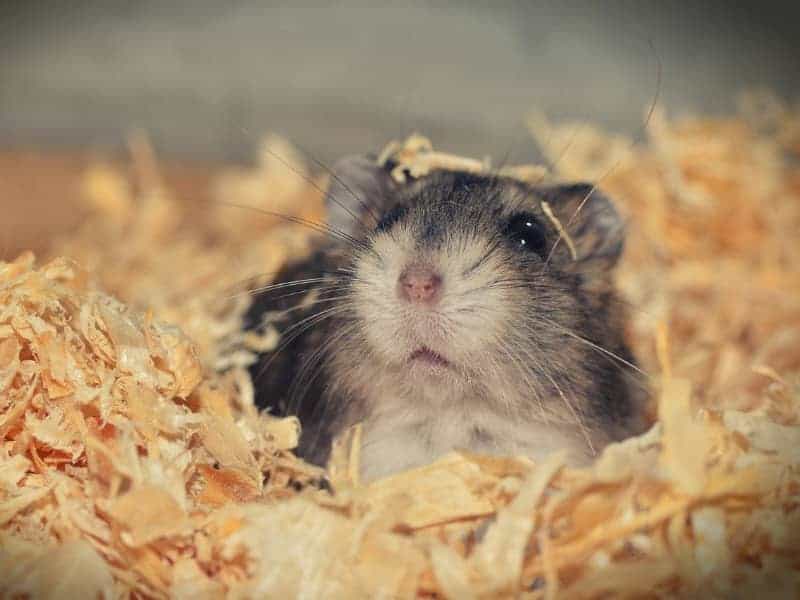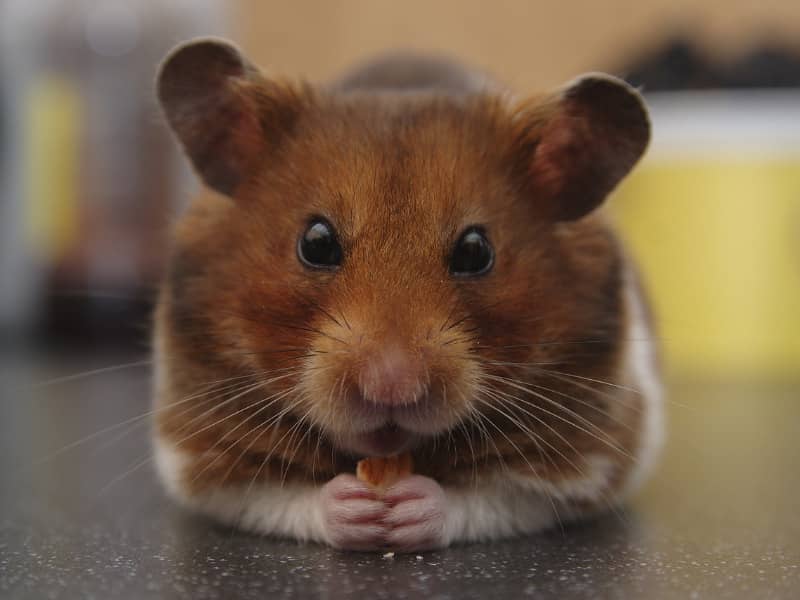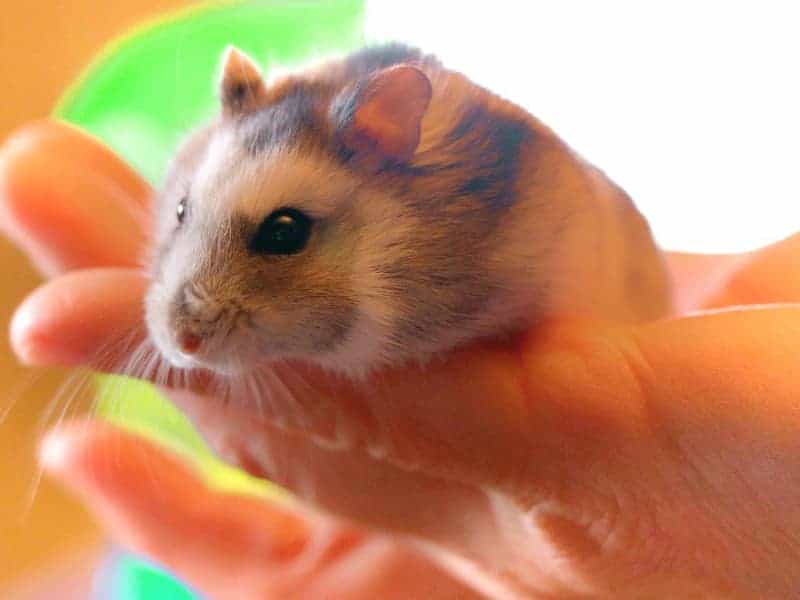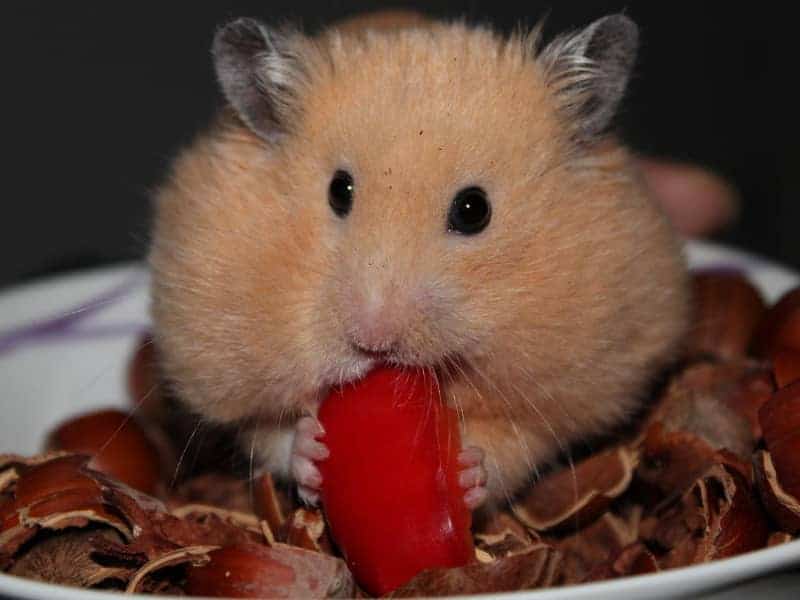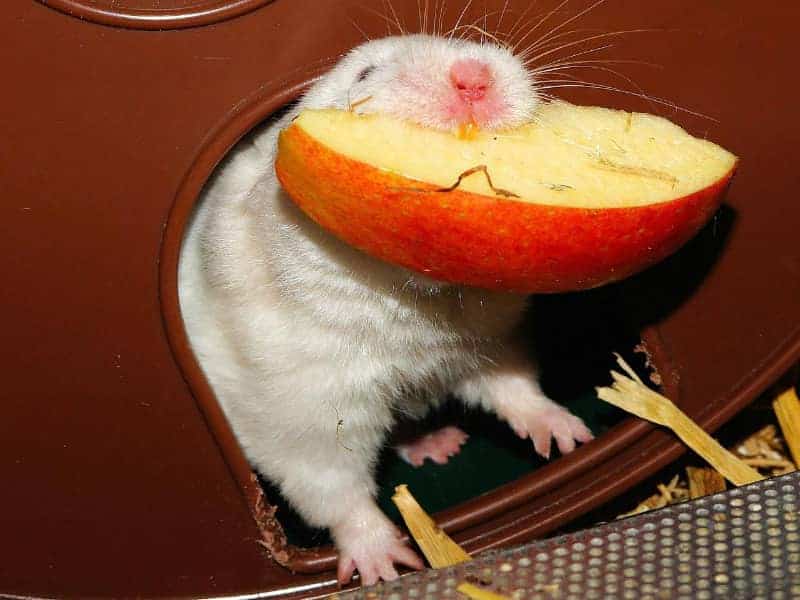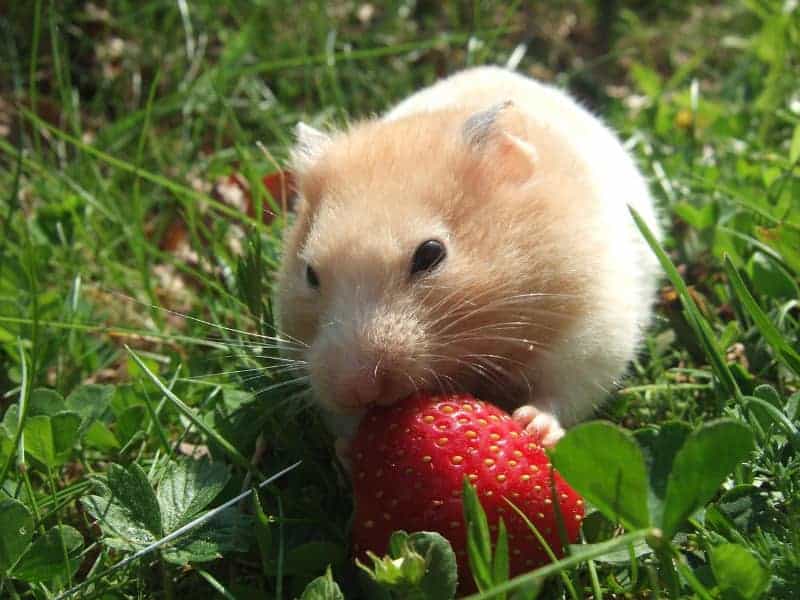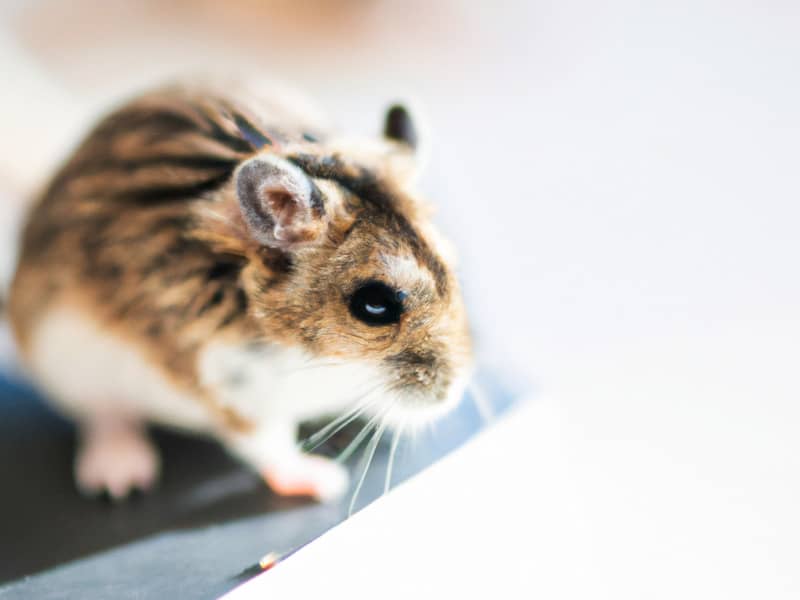
Chinese striped hamster
Chinese Striped Hamster, this article is for anyone who wants to learn more about This Hamster. Whether you are just curious or thinking about getting one as a pet, here you will find the most important information.
- Chinese striped hamster
- What is a Chinese striped hamster?
- Chinese striped hamster - biology and behavior
- Chinese striped hamster - keeping and care
- Chinese striped hamster - breeding and reproduction
- Health risks in Chinese striped hamsters
- The Chinese striped hamster and other hamster species
- Conclusion: Chinese striped hamster
- FAQ about the Chinese striped hamster
- What do Chinese striped hamsters eat?
- Are Chinese striped hamsters nocturnal?
- How big does a Chinese striped hamster grow?
- Is it possible to keep several Chinese striped hamsters together?
- How long do Chinese striped hamsters live?
- What diseases are common in Chinese striped hamsters?
- Do Chinese striped hamsters require a lot of space?
- Are Chinese striped hamsters suitable for beginners?
What is a Chinese striped hamster?
The Chinese striped hamster is a small rodent species that originated in the regions of northern China and Mongolia. They are mainly known for their small size and unique appearance. Weighing only 20 to 50 grams and with a body length of about 7 to 12 cm, they are really tiny.
Unlike other hamster species, Chinese striped hamsters are characterized by a rather slender body shape and a strikingly long tail. Their coat color usually varies from a grayish-brown shade to a darker brown, often with light stripes on the sides.
Why are they popular as pets?
Chinese striped hamsters are popular as pets predominantly because of their adaptability and friendly nature. They are relatively easy to care for and do not require much space, making them an ideal choice for beginners and people with limited living space.
They are also usually quite sociable and get along well with people as well as other hamsters of the same sex. Another advantage is that they are less susceptible to diseases than other hamster species. Their calm and gentle behavior also makes them a great pet for families with children.
Chinese striped hamster - biology and behavior
In the following section, we will take a deeper look at the biology and behavior of the Chinese striped hamster. Understanding these aspects is essential if you plan to keep such a hamster as a pet.
Anatomical features
Chinese striped hamsters are truly fascinating animals when it comes to their anatomy. They are relatively small, with an average body length of 7 to 12 cm and a weight of about 20 to 50 grams. At the same time, they have a rather slender body shape and a strikingly long tail, which is unusual for hamsters.
One of the most remarkable anatomical aspects is their fur. The colors vary, but most have a gray-brown coat with lighter stripes on the sides. These stripes are also what gave them their name. They have sharp, small teeth that grow back steadily and therefore need to be worn down regularly.
Habitat and natural distribution
The Chinese striped hamster originates from the steppes and semi-deserts of northern China and Mongolia. There it lives in burrows, which it digs itself or takes over from other animals.
Natural habitats are often barren and offer limited food sources, making these hamsters highly adaptable. They feed on a variety of plants and small animals. Their ability to cope with extreme temperatures and limited food sources makes them hardy and resilient animals.
Social behavior and communication
Chinese striped hamsters are rather social animals by nature, especially when living with hamsters of the same sex. However, they can also be territorial, so it is advisable to monitor their interactions carefully.
Unlike some other hamster species, they are generally not nocturnal, but rather active at dusk and early morning. They communicate through a series of sounds, gestures and body postures to express their mood and intentions. It is important to interpret these signs correctly in order to build a good relationship with your pet.
Chinese striped hamster - keeping and care
After looking at the biology and behavior of the Chinese striped hamster, it is time to discuss the practical aspects of keeping and caring for it. This section should help you to be a caring and responsible owner.
Basic equipment for the cage
If you are thinking about keeping a Chinese striped hamster as a pet, the first purchase is of course the cage. When choosing a cage, the size should be at least 100 x 40 x 40 cm. Make sure that the distance between the bars is not too large, as these little creatures can be very adept at escaping.
It is important that the cage is equipped with the basics such as a running wheel, a drinking bottle and a food bowl. A corner for the sand bath and another for the hiding place should also not be missing.
Feeding and nutrition
The diet of the Chinese striped hamster is another important aspect of care. A balanced diet should consist of a mixture of vegetables, fruits and special hamster food. Fresh water should always be available.
Although they are omnivores, there are some foods that should be avoided, such as citrus fruits and raw potatoes. Care should also be taken with quantity; overfeeding can lead to health problems.
Health and hygiene
Good hygiene is essential for the health and well-being of your Chinese striped hamster. The cage should be cleaned at least once a week to prevent the spread of bacteria.
It's also wise to schedule regular vet visits to make sure your hamster is healthy. Watch for signs of illness such as lethargy, changes in eating behavior or a shaggy coat, and see a veterinarian immediately if there are any concerns.
Chinese striped hamster - breeding and reproduction
If you are interested in breeding Chinese striped hamsters or just want to know more about their reproduction, then this section is for you. Here you will learn everything you need to know about the whole process.
Mating behavior
The mating behavior of Chinese striped hamsters is interesting and differs in some ways from other hamster species. While they are generally more social, matching males and females can be challenging. The male can become particularly territorial during mating season, so it is advisable to monitor the two hamsters carefully.
The best time for mating is usually late evening, when the hamsters are most active. It can be helpful to get the two animals used to each other beforehand by separating them with a grid. This way they can sniff each other and the probability of a successful mating increases.
Pregnancy and birth
After a successful mating, pregnancy in Chinese striped hamsters usually lasts about 18 to 21 days. During this time, it is important to provide a stress-free environment for the female. A separate nest should be set up in the cage where the mother can give birth in peace.
The birth itself usually takes only a few hours, and usually 4 to 6 young are born. These are blind and naked at birth, but quickly develop fur and open their eyes after about a week.
Raising the young
The rearing of the young requires special attention. In the first weeks of life, they are very susceptible to temperature fluctuations and need the warmth of the mother. Therefore, the cage should be in a warm, draft-free place during this time.
The young begin to eat solid food from about the second week of life, although they continue to be suckled by the mother. From the fourth to fifth week, they are usually independent enough to be separated from the mother.

Health risks in Chinese striped hamsters
The well-being of your Chinese striped hamster depends heavily on its health. Even though this hamster species is considered quite robust, there are specific health risks that you should be aware of.
Respiratory
Chinese striped hamsters can suffer from respiratory problems that can be caused by a variety of factors. Symptoms such as sneezing, nasal discharge and difficulty breathing are signs of possible respiratory problems. Good hygiene and avoiding drafts can help minimize the risk.
Diarrhea and digestive problems
Improper nutrition or spoiled food can lead to digestive problems and diarrhea. In the worst case, this can lead to dehydration and further health complications. It is important to choose food carefully and provide fresh water.
Tumors
Tumors can be both benign and malignant. If you notice changes on the skin or under the fur of your hamster, you should definitely consult a veterinarian. The earlier a tumor is detected, the better the chances of treatment.
Dental problems
The teeth of a Chinese striped hamster are constantly growing. If they are not worn down naturally, they can become too long and make eating difficult. A veterinarian can shorten the teeth if necessary.
Skin diseases
Skin problems can be caused by parasites such as mites or fleas, as well as fungal infections. Itching, redness and hair loss are symptoms that can indicate such diseases. In such cases, rapid veterinary treatment is necessary.
This section is designed to help you better monitor the health of your Chinese Striped Hamster and respond to signs of illness in a timely manner.
The Chinese striped hamster and other hamster species
With the following small table we would like to show you the differences of the Chinese striped hamster with other hamster species.
| Hamster species | Size (cm) | Lifetime (years) | Food preferences | Activity time | Sociability |
| Chinese striped hamster | 7-12 | 2-3 | Vegetables, fruits, nuts | Twilight | Sociable |
| Golden hamster | 13-18 | 2-3 | Vegetables, fruit, seeds | Night | Loner |
| Dwarf hamster | 5-10 | 1.5-2 | Vegetables, fruits, proteins | Twilight and night | Sociable |
| Teddy hamster | 12-15 | 2-3 | Vegetables, fruits, cereals | Night | Loner |
Conclusion: Chinese striped hamster
You've made it to the end of this comprehensive guide to the Chinese striped hamster! This section summarizes the most important points and gives you some final thoughts and recommendations.
Summary of the main points
We have learned a lot about the Chinese striped hamster. Starting with its anatomical characteristics and natural behavior, and ending with husbandry, care and breeding. We also discussed some of the health risks that can occur with this species of hamster.
Personal recommendations for the attitude
If you're thinking about keeping a Chinese striped hamster as a pet, think about the basic equipment you'll need and the hamster's nutritional needs. A well-ventilated cage, a balanced diet and regular vet visits are key to your hamster's long, healthy life.
Final thoughts
The Chinese striped hamster is a fascinating and adaptable animal that makes an excellent pet. Its low maintenance and friendly nature make it especially suitable for beginners and families with children. If you are willing to invest the necessary time and effort in the care and breeding, this little companion will certainly bring you much joy.
FAQ about the Chinese striped hamster
What do Chinese striped hamsters eat?
Chinese striped hamsters prefer a balanced diet of vegetables, fruits and nuts. It is important to provide them with fresh water as well.
Are Chinese striped hamsters nocturnal?
Unlike many other hamster species, Chinese striped hamsters are primarily active at dusk. However, they can also be active during the day.
How big does a Chinese striped hamster grow?
An adult Chinese striped hamster has a body length of about 7 to 12 cm and weighs between 20 and 50 grams.
Is it possible to keep several Chinese striped hamsters together?
Yes, Chinese striped hamsters are social animals and get along well with hamsters of the same sex. However, it is important to carefully monitor their interactions to avoid conflict.
How long do Chinese striped hamsters live?
The average lifespan of a Chinese striped hamster is about 2 to 3 years, depending on living conditions and care.
What diseases are common in Chinese striped hamsters?
Chinese striped hamsters can suffer from respiratory diseases, diarrhea, tumors and dental problems. A veterinarian should be consulted if there are signs of illness.
Do Chinese striped hamsters require a lot of space?
Since they are quite small, Chinese striped hamsters do not require much space. A cage with the minimum dimensions of 100 x 40 x 40 cm is usually sufficient.
Are Chinese striped hamsters suitable for beginners?
Yes, because of their adaptability and friendly nature, Chinese striped hamsters are a good choice for beginners.
Author

-
Garden animal - A life with nature
Welcome to my animal blog! My name is Dirk and I am happy to take you on my journey through the fascinating world of animals and gardening.
Born 54 years ago, I have had an insatiable curiosity for the animal world around me since childhood. Although I have moved professionally in other industries, my true passion has always been animals and nature. It is remarkable how a small garden has become such an important part of my life.
Many of my fondest memories are associated with the animals that share our home. Whether it's the curious squirrels that scurry across the trees in the morning, the colorful variety of birds that visit our feeders, or the busy bees and butterflies that pollinate our flowers, every moment with them is invaluable to me.
This blog is my contribution to share my experiences, discoveries and insights with like-minded people. Here I will share stories of unforgettable encounters with animals, give tips on gardening and creating wildlife-friendly habitats, and take you on my journeys through nature.
Thank you so much for being here!
Cordial,
Dirk aka garden animal
Last posts
- 27. February 2024PetsVeganes Hundefutter – Grün und Gesund?
- 18. January 2024ChickensOregano für Hühner
- November 27, 2023HamsterDiurnal hamsters
- November 24, 2023HamsterHamster hammock

